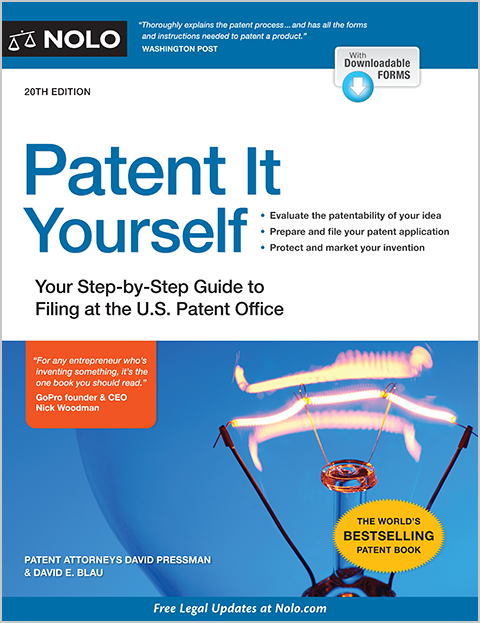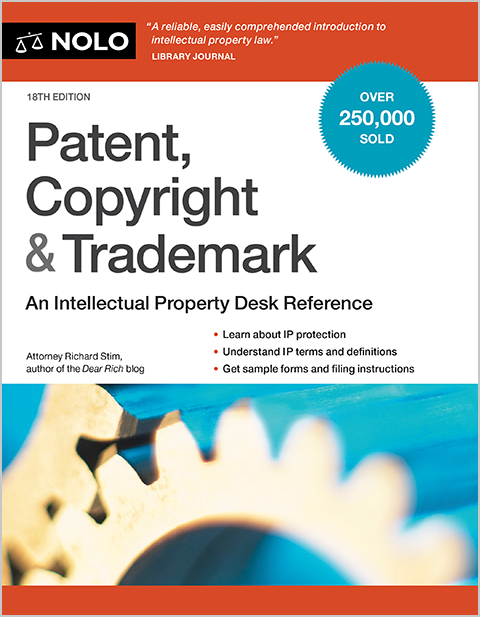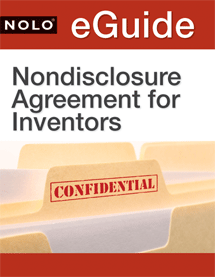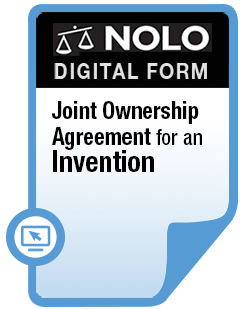Class 9 includes apparatus and instruments for scientific or research purposes, including IT, audiovisual, and safety equipment.
Trademark Class 9 includes apparatus and instruments for scientific or research purposes. The class also includes information technology equipment, audiovisual equipment, and safety and life-saving equipment.
Specifically, the class includes computers and computer software, radios, cameras, phones, and microscopes.
What Goods Are Included Under Trademark Class 9?
The following is a more comprehensive list of Class 9 goods:
- Exposed film, downloadable ring tones for mobile phones, exposed X-ray films, exposed, X-ray photographs other than for medical purposes, and electronic databases.
- Downloadable image files, videotapes with animated cartoons, exposed cinematographic film, downloadable music files, and downloadable electronic publications.
- Computer software, recorded computer programs, recorded computer application software, electronic notice boards, juke boxes for computers, computer monitors, and computer game software.
- Downloadable computer software and firmware, computer operating systems, recorded computer operating programs, electronic agendas, amplifiers, acoustic couplers for data processing, demagnetizing apparatus for magnetic tapes, and magnetic encoders.
- Broadband wireless equipment, acoustic conduits, acoustic couplers, galena crystal detectors, frequency converters, radios, satellites for scientific purposes, sound transmitting apparatus, speaking tubes, electronic transmitters of jamming signals, telecommunication transmitters, transmitting sets, and transponders.
- Computer network hubs, computer network server, computer network switches, wireless communications devices, and electronic communications systems for the transmission of data.
- Telephones, cell phone straps, facsimile transmission machines, hands-free kits for phones, phototelegraphy apparatus, mobile phones, radio pagers, radiotelegraphy sets, radiotelephony sets, telegraphs, telephone apparatus, telephone receivers, telephone transmitters, teleprinters, teletypewriters, video telephones, and walkie-talkies.
- Apparatus for broadcasting, receiving antenna for satellite broadcast, cable broadcast transmission machines, and transmitting and receiving apparatus for television broadcasting.
- Antennas, ariels, masts for wireless aerials, dish antennas, microwave antennas, and antenna filters.
- Computer storage devices, blank compact discs, floppy computer disks, magnetic encoded identification bracelets, encoded identity cards, hologram apparatus, magnetic apes, optical discs, phonograph records, punched card machines for offices, sound recording strips, sound recording carriers, blank USB flash drives, video cassettes, video game cartridges, and videotapes.
- Scanners, printers, photocopiers, image scanner, printers, photo printer plotters, and blueprinting machines.
- Data processing equipment and accessories (electrical and mechanical), bar code readers, electronic data processing apparatus, electronic pocket translators, interfaces for computers, optical character readers, readers, and voting machines.
- Calculators, abacuses, adding machines, calculating machines, calculating scales, and pocket calculators.
- Ticket dispensers, electronic parking lot ticket dispensers, and video lottery ticket terminals.
- Electronic payment terminals, money counting and sorting machines, automated teller machines [ATM], cash registers, and coin-operated apparatus.
- Computer keyboards, computer peripheral devices/equipment, electronic pens, computer stylus, magnetic tape units for computers, computer monitors, computer mouse, mouse pads, and wrist rests for use with computers.
- Computers, computer hardware, bags adapted for laptops, laptop computers, notebook computers, and sleeves for laptops.
- Electronic components for computers, computer memory devices, disk drives, microprocessors, modems, and computer central processing units.
- Portable media players, compact disc players, DVD players, head cleaning tapes for video recorders, light-emitting diodes, and audio- and video-receivers.
- Radio receivers, audio speakers, sound recording apparatus, answering machines, cabinets for loudspeakers, cassette players, phonograph records, dictating machines, headphones, horns for loudspeakers, juke boxes, loudspeakers, megaphones, microphones, needles for record players, personal stereos, record players, apparatus for changing record player needles, sound reproduction apparatus, tone arms for record players, and vehicle radios.
- Television receivers, video screens, camcorders, cinematographic cameras, digital photo frames, apparatus for editing cinematographic film, magic lanterns, neon signs, projection screens, projection apparatus, teleprompters, and television apparatus for protection purposes.
- Cameras, cases especially made for photographic apparatus and instruments, photography darkroom lamps, drying racks for photography, drying apparatus for photographic prints, epidiascopes, camera filters, filters for ultraviolet rays for photography, photographic flashbulbs, flashlights for use in photography, frames for photographic transparencies, heliographic apparatus, lens hoods, lenses for astrophotography, shutter releases, lens shutters, slide projectors, spools for cameras, stands for photographic apparatus, photographic transparencies, exposed photographic slides, camera tripods, photographic viewfinders, and washing trays for photography.
- Cables for electrical and optical signal transmission systems, coaxial cables, fiber optic cables, optical fibers, light-conducting filaments, telegraph wires, telephone wires, magnets, magnetizers, demagnetizers, electromagnetic coils, decorative magnets, electricity conduits, ionization apparatus not for scientific and laboratory use, and ozonizers [ozonators].
- Apparatus, instruments, and cables for electricity, electronic controllers used to reduce power consumption, apparatus and instruments for accumulating and storing electricity, electric accumulators, anode batteries, high tension batteries, batteries, electric batteries for vehicles, batteries for lighting, battery jars, battery boxes, battery chargers, chargers for electric batteries, galvanic cells, galvanic batteries, grids for batteries, plates for batteries, and solar batteries.
- Circuit breakers, control panels, commutators, comparators, electric converters, current rectifiers, inverters, lightning conductors, lightning arresters, electricity limiters, relays, step-up transformers, switch boxes, time switches, electric voltage transformers, voltage surge protectors, and voltage regulators for vehicles.
- Photovoltaic cells, photovoltaic inverters, and photovoltaic modules.
- Electric and electronic components, tube amplifiers, valve amplifiers, anodes, anticathodes, armatures, cathodes, choking coils, circuit closers, electric coils, condensers [capacitors], electric conductors, connections for electric lines, electric connections, electric contacts, electric couplings, electric outlet covers, electric discharge tubes other than for lighting, distribution boxes, distribution consoles, electrical ducts, electricity conduits, fuses, glass covered with an electrical conductor, holders for electric coils, electrical inductors, junction boxes, light dimmers, electric light dimmers, light-emitting diodes [LED], lighting ballasts, electric resistances, rheostats, semiconductors, electrical plugs and sockets, solenoid valves [electromagnetic switches], switchboards, electric switches, telerupters, thermionic valves, thermionic tubes, transistors, triodes, vacuum tubes for radio, and X-ray tubes not for medical purposes.
- Electric cable, electric wires, insulated copper wire, materials for electricity generation, electrified rails for mounting spot lights, fuse wires, identification threads for electric wires, identification sheaths for electric wires, junction sleeves for electric cables, magnetic wires, sheaths for electric cables, battery starter cables, and wire connectors.
- Electrical circuit boards, integrated circuit chips, integrated circuit cards, smart cards, printed circuits, printed circuit boards, wafers for integrated circuits, protective eye pieces, micrometer screws, inspection mirrors, microscope objectives, optical lenses, optical glass, optical lanterns, optical lamps, optical apparatus and instruments, optical condensers, prisms for optics purposes, stereoscopes, binoculars, magnifying glasses, magnifying peepholes for doors, sighting telescopes for firearms, and thread counters.
- Eyewear, contact lenses, contact lens cases, eyeglass chains, eyeglass cases, eyeglass cords, eyeglass frames, spectacle cases, spectacle frames, spectacle lenses spectacles, sport goggles, anti-glare glasses, sunglasses, sunglasses, and laser equipment designed for drilling optical lenses for eyeglasses.
- Fire extinguishers, safety traffic cones, fire extinguishing apparatus, fire engines, fire hose nozzles, fire hose, fire pumps, oxygen regulators, shoes for protection against accidents and fire, smoke detectors, and sprinkler systems for fire protection.
- Smoke alarms, burglar alarms, acoustic alarms, sound alarms, electric alarm bells, electronic anti-theft system, and fire alarms.
- Electronic access control systems, electrified fences, electric locks, and electronic readers and controllers for controlling access to a premises.
- Signaling whistles, luminous beacons, signal bells, electric buzzers, dog whistles, electric door bells, flashing safety lights, marking buoys, mechanical or luminous road signs, signal bells, signaling panels, signaling buoys, railway signals, sirens, traffic-light apparatus [signaling devices], vehicle breakdown warning triangles, and whistle alarms.
- Protective and safety equipment, anti-dazzle spectacles, asbestos gloves for protection against accidents, asbestos clothing for protection against fire, asbestos safety screens for firemen, bullet-proof waistcoats, bullet-proof vests, clothing for protection against accidents, clothing for protection against radiation, nonmedical respiratory mask filters, fire escape ladders, fire boats, fire blankets, garments for protection against fire, gloves for protection against accidents, gloves for protection against X-rays for industrial purposes, knee pads for workers, life jackets, life belts, life buoys, lifesaving capsules for natural disasters, life rafts, nets for protection against accidents, protective masks, protective suits for aviators, reflecting discs for wear for the prevention of traffic accidents, air purifying respirator masks, safety nets, safety tarpaulins, safety harnesses other than for vehicle or sports purposes, solderers' helmets, workmen's protective face shields, protective helmets, protective helmets for sports, and riding helmets.
- Diving suits, underwater breathing apparatus, diving masks, ear plugs for divers, gloves for divers, and nose clips for divers and swimmers.
- GPS navigation device, directional compasses, compasses for measuring, electronic tags for goods, marine compasses, nautical and photographic apparatus and instruments, navigation apparatus for vehicles in the nature of onboard computers, electric navigational instruments, satellite navigational system, sextants, and simulators for the steering and control of vehicles.
- Pressure indicators, air analysis apparatus, diagnostic apparatus not for medical purposes, machines for dispensing pre-determined dosages of medication, pressure indicators, stroboscopes, temperature indicators temperature sensors, and wind socks for indicating wind direction.
- Sonars, detectors, counterfeit coin detectors, false coin detectors, metal detectors, automatic altitude indicators, gas testing instruments radar apparatus, and rods for water diviners.
- Crash test dummies, apparatus for testing vehicle brakes, electronic apparatus for testing automobile engine oil, and automatic indicators of low pressure in tires.
- Scales, meters, acid hydrometers, acidimeters for batteries, actinometers, aerometers, alcoholmeters, alidades, altimeters, anemometers, apertometers, azimuth instruments, barometers, calibrating devices, densimeters, densitometers, dynamometers, ergometers, exposure meters, frequency meters, gasoline gauges, gasometers, gauges, hemline markers, hydrometers, hygrometers, lactodensimeters, lactometers, bubble levels, levelling rods, marine depth finders, marking gauges for joinery purposes, measures, measuring apparatus, measuring instruments, measuring glassware, graduated glassware, measuring spoons, metronomes, octants, photometers, planimeters, plumb lines, plumb bobs, polarimeters, pressure measuring apparatus, manometers, protractors, refractometers, saccharometers, salinometers, screw-tapping gauges, slope indicators, gradient indicators, spectroscopes, spirit levels, surveying instruments, surveying apparatus, surveying chains, surveyors' levels, taximeters, theodolites, vacuum gauges, variometers, viscosimeters, water level indicators, wavemeters, and weights.
- Time recording apparatus, weighing machines, chronographs, egg timers, hourglasses, parking meters, time recording apparatus, time clocks, scientific instrumentation for measuring, balances [steelyards], lever scales [steelyards], letter scales, precision balances, weighbridges, and weighing apparatus and instruments.
- Distance measuring apparatus, rulers, calipers, carpenters' rules, apparatus for recording distance, measuring rules, appliances for measuring the thickness of leather, micrometers, micrometer gauges, pedometers, rangefinders, telemeters, measuring rules, slide calipers, slide rules, spherometers, and verniers.
- Speed indicators, tachometers, and laser speed detectors
- Temperature sensors, pyrometers, temperature indicators, thermometers not for medical purposes, clamp meters for measuring electricity, ammeters, galvanometers, ohmmeters, oscillographs, and voltmeters.
- Controllers, regulators, boiler control instruments, decompression chambers, electric installations for the remote control of industrial operations, electrodynamic apparatus for the remote control of railway points, electrodynamic apparatus for the remote control of signals, speed regulators for record players, thermostats, and thermostats for vehicles.
- Scientific research and laboratory apparatus, educational apparatus and simulators, betatrons, capillary tubes, cases fitted with dissecting instruments for scientific or research purposes, apparatus for automatic chromatography apparatus for laboratory use, protective clothing especially made for laboratories, crucibles, cupels, cyclotrons, distillation apparatus for scientific purposes, DNA chips, fermentation apparatus for laboratory use, furnaces for laboratory use, ovens for laboratory use, laboratory furniture, incubators for bacteria culture, laboratory trays, laboratory centrifuges, meteorological balloons, meteorological instruments, microscopes, microtomes, particle accelerators, petri dishes, pipettes, pitot tubes, probes for scientific purposes, resuscitation mannequins, stills for laboratory experiments, telescopes, test tubes, and urinometers.
What Goods Aren't Included Under Class 9?
But you would not use Class 9 if you're applying for:
- electromechanical apparatus for the kitchen (grinders and mixers for foodstuffs, fruit presses, electrical coffee mills, etc.), and certain other apparatus and instruments driven by an electrical motor (Class 7 - Machinery)
- apparatus for pumping or dispensing fuels (Class 7 - Machinery)
- electric razors, clippers, and flat irons (Class 8 - Hand Tools)
- electrical apparatus for space heating or for the heating of liquids, for cooking, ventilating, etc. (Class 11 - Environmental Control Apparatus)
- electric toothbrushes and combs (Class 21 - Housewares and Glass)
- clocks and watches and other chronometric instruments (Class 14 - Jewelry)
- control clocks (Class 14 - Jewelry), and
- amusement and game apparatus adapted for use with an external display screen or monitor (Class 28 - Toys and Sporting Goods).
Examples of Trademarks in Class 9
You can find trademarks that have been applied for or registered by the United States Patent and Trademark Office (USPTO) under Class 9 in the Trademark Electronic Search System (TESS), an electronic trademark database.
Some well-known examples of Class 9 marks include:
- MICROSOFT (computers and software)
- SONY (televisions, radios, and cameras), and
- DURACELL (batteries).
USPTO Trademark Classes
The USPTO, the federal agency that oversees the registration of federal trademarks, divides marks into 45 different classes of products and services. The purpose of these classes is to allow different types of businesses to register their trademarks into categories most related to their core business.
The first 34 classes consist of different broad categories of goods. The last 11 classes consist of different broad categories of services.
Related or Coordinated Classes to Class 9
If you're not sure whether you should apply for your mark under Class 9, you can consider a "coordinated" class. A coordinated class is one that's related to another class, usually because the PTO has determined that applicants filing within one particular class often file in other specific classes, too.
For Class 9, the USPTO has determined the following classes to be coordinated classes:
- Class 10 - Medical Apparatus
- Class 16 - Paper Goods and Printed Matter
- Class 28 - Toys and Sporting Goods
- Class 35 - Advertising and Business Services
- Class 38 - Telecommunications Services
- Class 41 - Education and Entertainment Services
- Class 42 - Computer and Scientific Services, and
- Class 44 - Medical, Beauty, and Agricultural Services.
Trademark Filing Fees
The trademark class system will also affect the scope of the registration fees that you pay. The USPTO charges a set filing fee per class of goods or services. So, if you apply for a trademark for posters (Class 16) and shirts (Class 25), you must pay the filing fee for two classes, which is double the filing fee for one class. (37 C.F.R. §2.6(a)(1)(2022).)
Be sure to indicate the correct class at the time you're registering a trademark—if the application doesn't already do so for you. If you list the incorrect class, you must restart the application process, and your filing fees will not be refunded.
Your registration is restricted to those classes that encompass the goods or services you're already offering (as shown by the specimens you submit) or that you plan to offer (if you're registering on an intent-to-use basis).
USPTO Specimens
At some point in the trademark application process, you'll need to supply the USPTO with a specimen. A specimen is a real-world example of how your mark is being used in association with your goods or services. In other words, it's how customers come across your mark as they shop for your goods or services.
If you're applying for a use-in-commerce trademark (you're already using your trademark to sell your goods or services), then you'll submit a specimen with your trademark application. If you're applying for an intent-to-use trademark (you haven't started using your trademark yet but plan to), then you'll submit a specimen after you've already submitted your trademark application once the trademark examiner—the person at the USPTO reviewing your application—requests it from you.
For every class of goods or services, you'll need to submit at least one specimen regardless of how many goods or services are listed under the class. So, if you apply for hats, t-shirts, and socks under Class 25, then you'll only need to submit one specimen and you can choose which good to include in your specimen.
(37 C.F.R. §2.34(b)(2)(2022).)
Acceptable Specimens for a Goods Trademark
The specimen must show the mark as used on or in connection with the goods in commerce. Specifically, a specimen for a goods trademark must show use of the mark in a manner that would be perceived by potential purchasers as identifying the applicant's goods and indicating the goods' source.
When a trademark is on the good itself or on the packaging or containers of the goods, photographs or facsimiles showing the trademark in use on or with the goods are acceptable.
A specimen for a goods trademark can appear:
- On the good itself. The trademark can be imprinted on the body of the goods, as with metal stamping; it can be applied by a rubber stamp; or it can be inked on by using a stencil or template.
- On a tag for the good. For example, you could include your trademark on a sales tag above the product price, or it can be printed below the product specifications on a mattress tag.
- On a label for the good. For instance, your trademark could be on the UPC barcode sticker or on a drink's ingredients label. You could also use shipping or mailing labels affixed to the goods as long as the trademark functions as an indicator of the good's source. For example, if the trademark appears only on the return address, then the specimen wouldn't be appropriate.
- Directly on the packaging or container for the good. The trademark can be on any type of commercial packaging that's normal for the particular goods as they move in trade, such as shipping boxes or shelf display packaging. For instance, gasoline pumps are normal containers or "packaging" for gasoline.
- On a display associated with the goods. If you sell your goods at trade shows or community events, your trademark could be printed out next to a display of your goods as long as customers can connect your trademark with the goods. For example, your trademark could be printed on the tablecloth at your booth or on a sign hanging from your pop-up tent.
(37 C.F.R. §2.56(2022).)
Webpage Listing for a Goods Trademark
If you sell your goods online—whether on your own website or on a third-party online marketplace—you can use a screenshot of the webpage where your good is listed for sale as your specimen.
The webpage must include:
- your trademark, either in the webpage header or in another prominent position
- a picture or description of your good, and
- a way for consumers to immediately purchase your good, such as an "add to cart" or "buy now" option.
If you use this kind of specimen, be sure you include—either on the screenshot or in the application—the website URL and the date you last accessed the webpage. (37 C.F.R. §2.56(c)(2022).)
While most marks appear in writing somewhere, trademarks can also be in audio format. If your mark represents a service, and it appears only on radio ads or in some other audio form, you can submit a sound file of the audio.
For more information about trademarks and federal registration, see our section on trademark law.
Talk to a Lawyer
Need a lawyer? Start here.
How it Works
- Briefly tell us about your case
- Provide your contact information
- Choose attorneys to contact you
- Briefly tell us about your case
- Provide your contact information
- Choose attorneys to contact you



